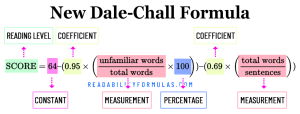This is where the concept of a reader profile becomes your compass. Picture Jane, a 30-year-old urban professional with a passion for contemporary fiction, who finds solace and adventure in the pages of a book after a long day’s work. She prefers ebooks for their convenience, often reading during her commute on the city subway. Her interests include technology, travel, and cultural exploration. She values well-developed characters and narratives that reflect her own experiences in a metropolitan environment.
Your reader profile, Jane, is not just a demographic statistic. She fits a semi-fictional portrait of your ideal reader. This profile has her age, job, hobbies, values, and reading habits. A reader profile guides you to tailor your writing to resonate with Jane and readers like her. It guides you in crafting language that speaks to her, scenarios that intrigue her, and themes that matter to her.
By focusing on Jane, your novel becomes more than words on a page; it transforms into a gateway to experiences, emotions, and worlds that align with your readers’ expectations and desires. This is the power of a well-constructed reader profile. It enables you to target the specific interests and needs of your readers. And it helps you write clearly, effectively, and meaningfully to them, whether it’s fiction or nonfiction.
Use the following checklist to create your ideal reader profile:
✓ Demographics: Start with the basics: age, gender, education level, occupation, and location. This information builds a foundational of who your readers are. Example: A profile for young adults might include readers aged 18-24, mostly college students or early career professionals, spread across urban and suburban areas.
✓ Psychographics: Interests, hobbies, values, attitudes, and lifestyle. What engages your readers, their beliefs, and their behavior? Example: If your target readers are young adults, they might value social connections, be interested in technology and trends, and lead active social lives.
✓ Reading Interests: Favorite genres, authors, and books. Knowing what your audience already enjoys can guide your writing style and content.
✓ Reading Habits: Frequency of reading, preferred formats (e.g., ebooks, audiobooks, print), and reading devices. Understand how and when your readers consume content. Example: Young adult readers might prefer e-books and audiobooks for convenience, with a penchant for genres like fantasy, self-help, and contemporary fiction.
✓ Themes or Topics: What specific themes or topics do your readers enjoy (e.g., historical periods, technological advancements, exercise)?
✓ Reaction to Current Events: Understand how current events influence their reading choices (e.g., increased interest in certain topics due to global events).
✓ Local and Global Issues: Awareness of local and global issues that might be relevant to the reader’s life and interests.
✓ Preferred Book Lengths: Do your readers prefer short reads, blog posts, or lengthy novels?
✓ Education Level: Know the learning compacity and interests of your readers, especially if you’re writing on technical, scientific, or specialized topics.
✓ Career Background: This can provide insights into the types of content that readers will find relevant or appealing, especially for non-fiction writers.
✓ Educational Goals: Do your readers consume content for educational purposes or personal development?
✓ Life Stage: Are your readers in school, working, retired, etc.? What’s their current life situation?
✓ Language Preferences: What language do your readers prefer? Are they comfortable with complex or simple language? Do they prefer straightforward narratives or enjoy intricate, layered storytelling. The complexity of language, narrative styles, and communication styles influence readability. Example: A young adult audience might enjoy a conversational and relatable tone, with language that is current but not overly simplistic.
✓ Language Proficiency: Are your readers multilingual? If so, what is their comfort level with different languages?
✓ Narrative Styles: Do your readers enjoy first-person narratives, multiple viewpoints, non-linear storytelling, etc.?
Once you’ve sketched out your reader profile, use it to guide your writing style, content choices, and format. Here’s how:
- Language and Style: Use the profile to determine language complexity and narrative style that will best resonate with your readers.
- Content Selection: Choose themes and topics that align with your readers’ interests and values.
- Visual Elements: Determine if your readers prefer visual aids like charts, infographics, or images. For younger readers or those oriented towards digital media, visual elements can enhance understanding and retention.
- Reading Environment: If your readers often read on-the-go, shorter chapters or segments might appeal to them better. For e-book readers, make the format responsive and easy to navigate on various devices.
- Format and Presentation: Decide on the best format (print, digital, multimedia) and presentation style (length of text, use of images, interactivity) based on your profile.
- Tone and Voice: Align the tone and voice of your content with your readers’ expectations and preferences. A younger audience might resonate more with a casual, upbeat tone, while a professional audience might prefer a more formal and authoritative voice.
- Customize Content Structure: Structure your content to align with your audience’s reading habits. Use bullet points, subheadings, and short paragraphs for readers who prefer quick, digestible content. For in-depth readers, use longer, detailed sections.
- Storytelling Techniques: If your readers enjoy narrative-driven content, weave storytelling elements into your writing. This can make even non-fiction content more engaging and relatable.
- Educational Value: If your audience values learning, add educational elements into your content.
- Cultural References: Tailor your content to include cultural references that resonate with your readers.
- Inclusivity: Be mindful of language and content that is inclusive and respectful of diverse backgrounds; make your content accessible and welcoming to all readers in your profile.
- Language Localization: If your readers are global, consider localizing content in different languages or adapting it to suit regional dialect.
- Feedback: Use feedback from your readers to refine the profile and adjust your content accordingly.
Reader Profile: Young Adult Reader
Reader Profile: College Graduate Reader
Scott, Brian. “How to Create a Reader Profile for Optimal Readability.” ReadabilityFormulas.com, 8 Dec. 2024, https://readabilityformulas.com/how-to-create-a-reader-profile/.








